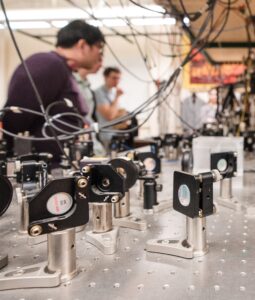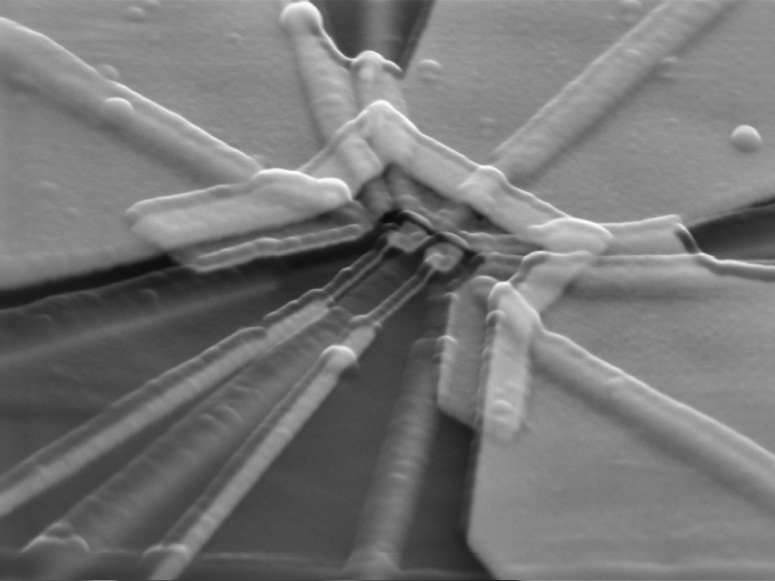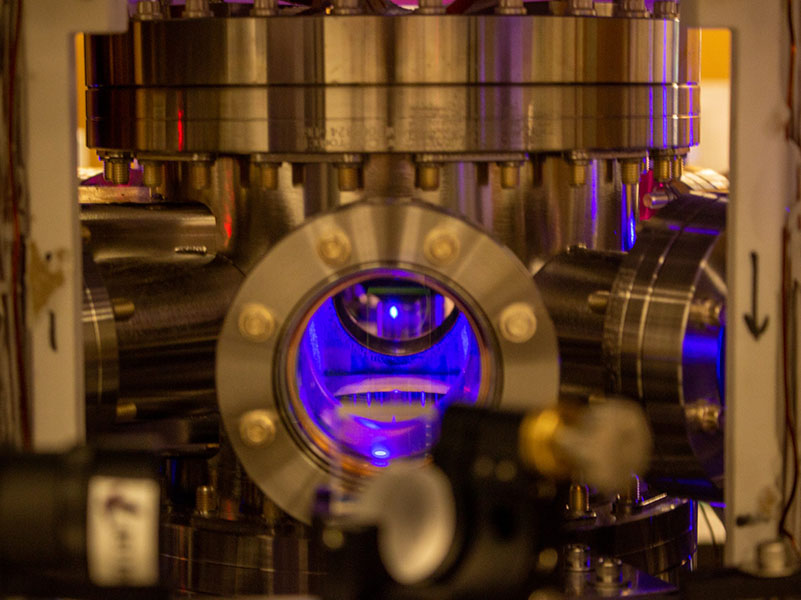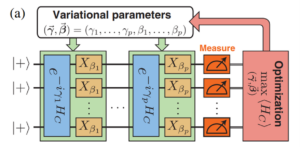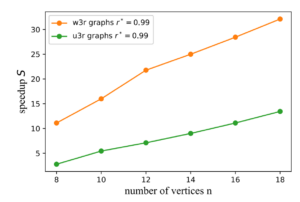The MSPQC program blends instruction, hands-on quantum computing lab skill development and research.
- Instruction: focuses on quantum theory, quantum gates, algorithms, quantum error correction, decoherence, quantum communication and secure transmission of information.
- Lab: requires students to complete 8 experiments in a single semester. The topics are related to Quantum Computing Principles and Quantum Devices.
- Research: independent study in PHYS 799 is required for the MSPQC program–many students complete this requirement by working with our WQI (Wisconsin Quantum Institute) faculty on research projects. Students are highly encouraged to engage in original research.
WQI Research Areas
The Wisconsin Quantum Institute (WQI) is the home for quantum science and engineering at the University of Wisconsin–Madison, though is highly interdisciplinary and encompasses groups and departments across campus including Physics, Computer Sciences, Electrical & Computer Engineering, Engineering Physics, Materials Sciences and Engineering, Chemistry, and Statistics.
In Physics there is robust experimental activity in three of the most promising platforms for scalable quantum computing: trapped neutral atoms, semiconducting quantum dots and superconducting integrated circuits.
Quantum Computing and Networking
Quantum computing research at WQI focuses on the design and implementation of superconducting, semiconducting and neutral atom qubits. Research also includes algorithmic design for quantum computation on discrete qubit- and continuous qudit-based quantum architectures.
Quantum Sensing
Quantum sensing makes use of the unique and counter-intuitive properties of matter and light when it is governed by quantum physics, such as quantization of energy levels, particle-wave duality, coherent superposition, and entanglement, to make precision sensors and measurements.
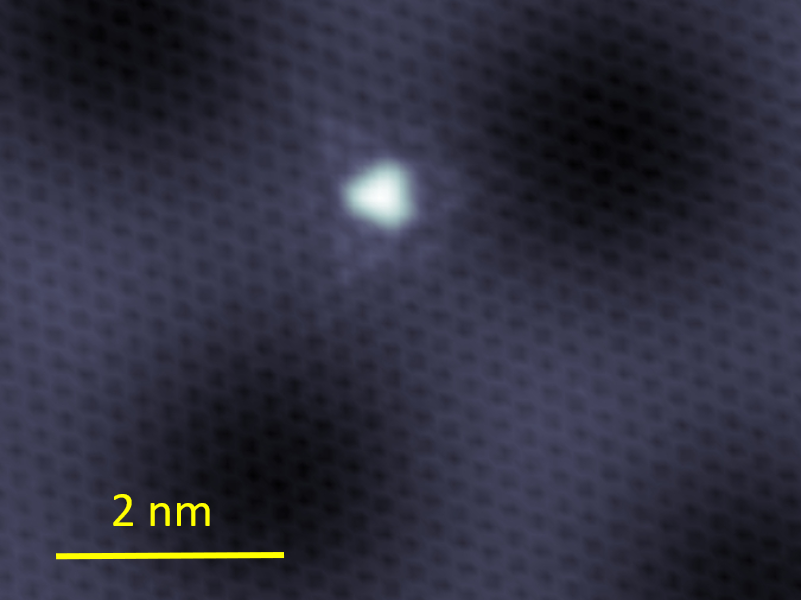
Quantum Materials
Quantum materials research focuses on designing, growing and measuring materials where quantum interactions are macroscopically observable.
Students typically complete at least one full semester of research while enrolled in the MSPQC program. Here are some examples of current MSPQC student research:
-
Yeqing Zhou: QAOA (quantum approximate optimization algorithm) is one of the most promising algorithms for NISQ (noisy intermediate-scale quantum) era, the current state of quantum computing. Yeqing researches the performance of a QAOA with adaptive bias fields in comparison to standard QAOA, and considers further research directions related to QAOA.
- Louis Farenci: Louis is writing an algorithm in Python that optimizes the position of a mirror on a 6-axis stage within a near-concentric optical cavity. The purpose of this research is to maximize photon collection, a task important for an architecture for quantum networking of neutral atom processors.
- Preetham Tikkireddi: Quantum computers are an emerging technology that will be crucial for quality, efficiency, and growth across multiple fields of study and industries, such as cybersecurity, manufacturing, and finance. Preetham is investigating reliable, secure, and efficient multi-programing paradigm for quantum computers. He tests his work mainly on the IBM systems.
MSPQC Student Publications:
- T. McJunkin, B. Harpt, Y. Feng, M. Losert, Rajib Rahman, J. P. Dodson, M. Wolfe, D. E. Savage, M. G. Lagally, S. N. Coppersmith, Mark Friesen, Robert Joynt, and M. A. Eriksson, “SiGe quantum wells with oscillating Ge concentrations for quantum dot qubits.” submitted for publication. [arXiv]
- D. D. Yavuz and A. Yadav, “Mapping of Quantum Systems to the Probability Simplex.” arXiv:2301.06572 (2023) [pdf]
- D. C. Gold, A. S. Bhadkamkar, S. Carpenter, L. T. Hogan, M. Dwyer, M. Beede, R. H. Goldsmith, D. van der Weide, and D. D. Yavuz, “High-power near-CW Raman lasing in mm-sized glass disks.” Opt. Lett. 47, 4171-4174 (2022) [pdf]
- Yi Feng and Robert Joynt, “Enhanced Valley Splitting in Si Layers with Oscillatory Ge Concentration.” arXiv:2206.08331, Phys. Rev. B 106, 085304 (2022)
-
Yuzhe Xiao, Linipun Phuttitarn, Trent Michael Graham, Chenghao Wan, Mark Saffman, Mikhail A. Kats, “Lateral beam shifts and depolarization upon oblique reflection from dielectric mirrors.” arXiv:2211.13927 (2022) [pdf]
-
Van Damme, X. Zheng, M. Saffman, M.G. Vavilov, and S. Kolkowitz, “Impacts of random filling on spin squeezing via Rydberg dressing in optical clocks.” PRA, 103, 023106 (2021).
